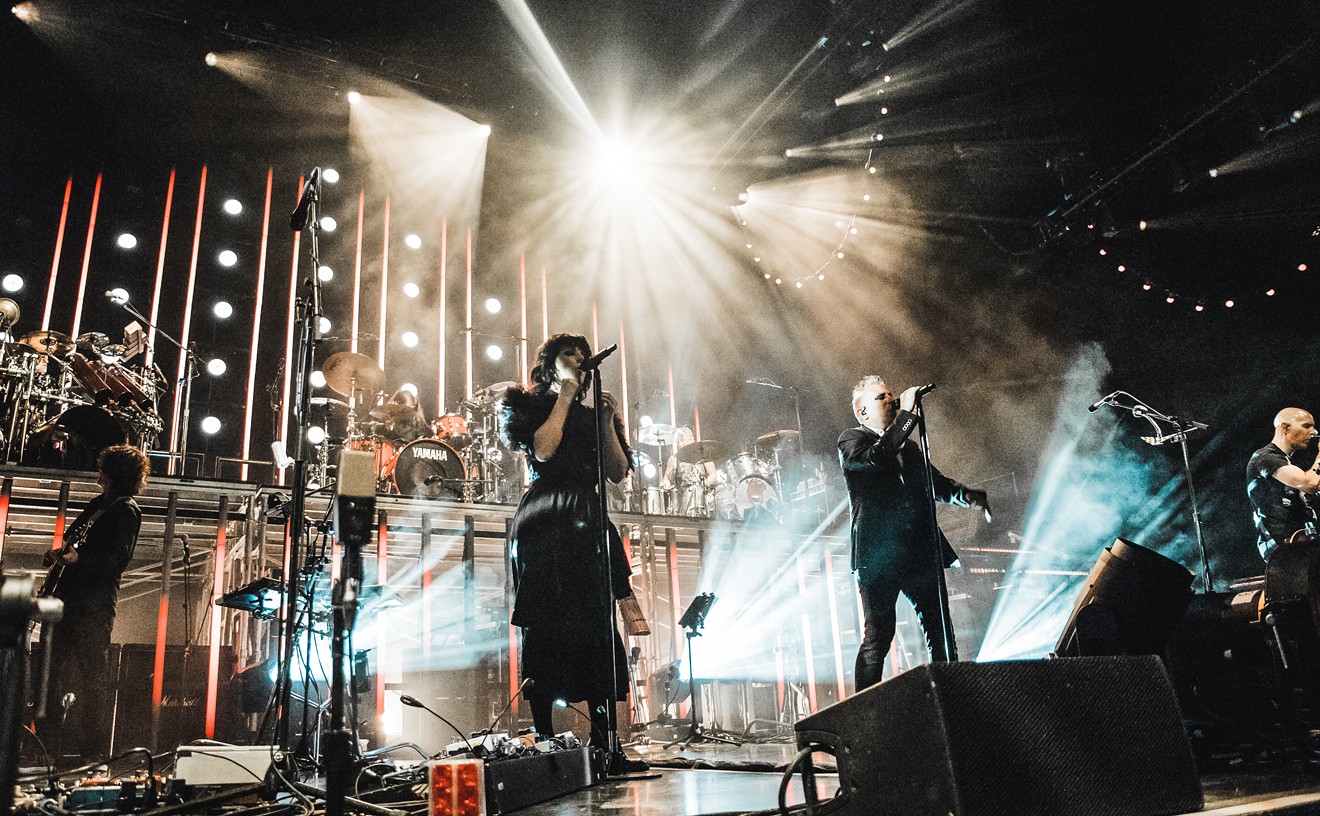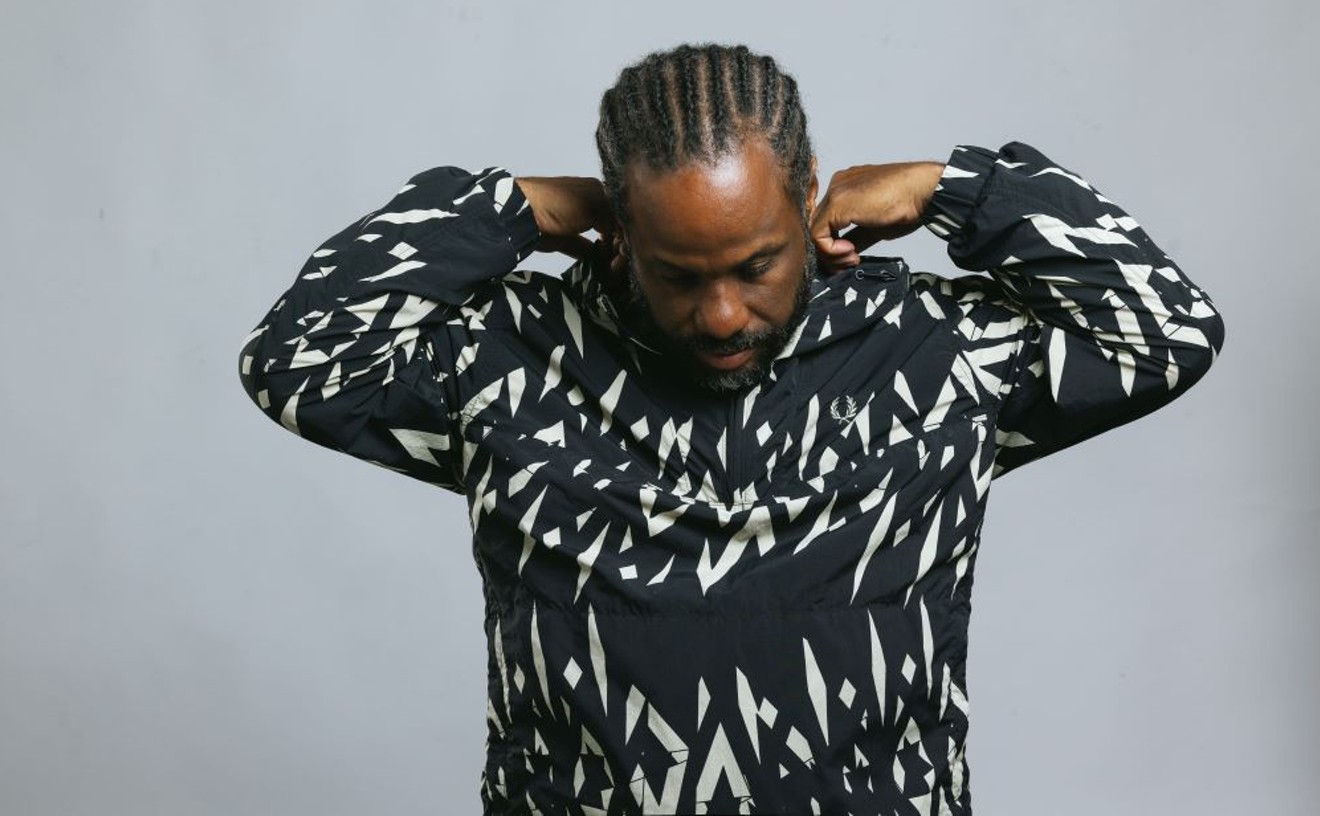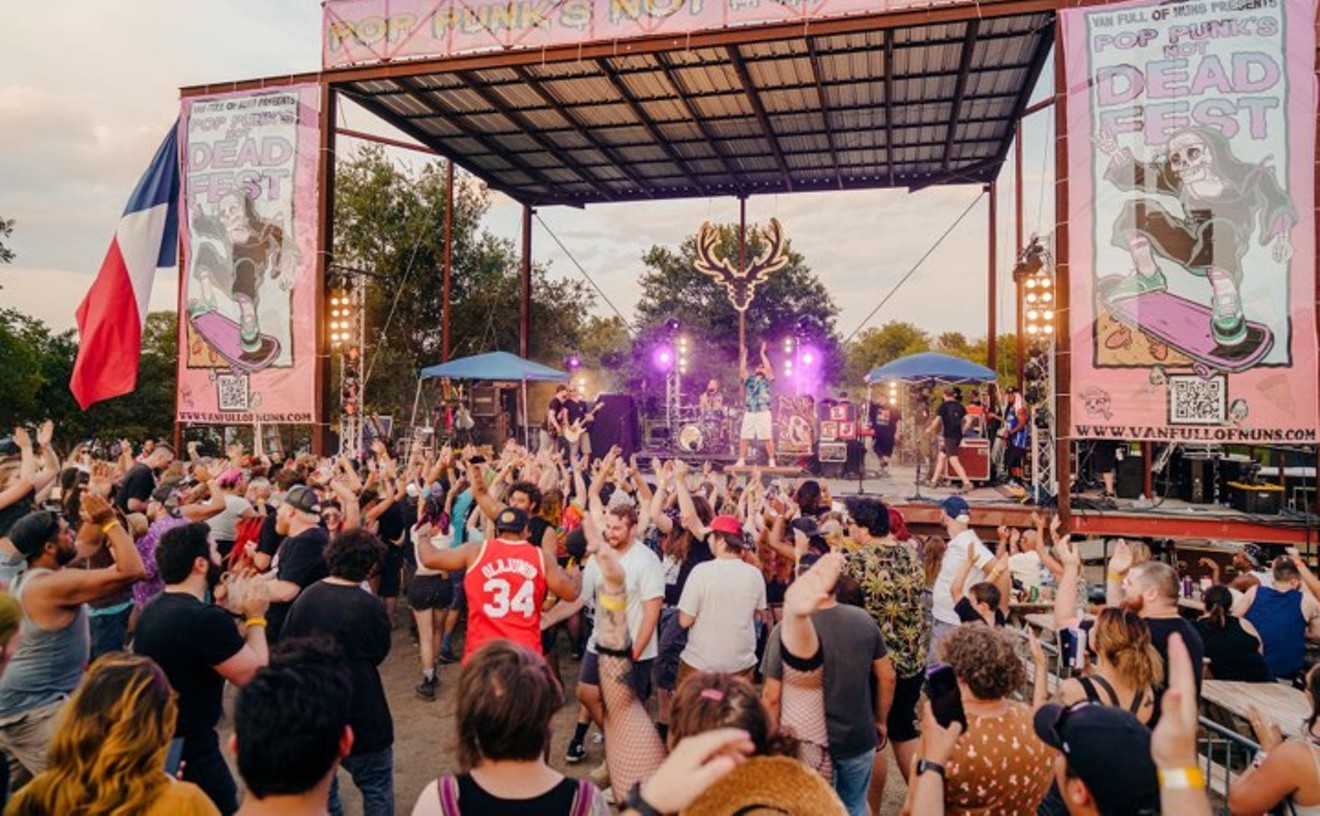The face belonged to drummer/percussionist/vibraphonist Ed Hagan, longtime Dallas jazz fixture and one of the last of America's true musical originals. The Old World he represented wasn't Europe--although he had style enough for several continents--but a hepcat jazz reality that recalled cool tunes, snap-brim fedoras, double-breasted suits, and Packard 8s. His death after a long battle with cancer on Christmas Eve didn't necessarily usher in an end of an era, but it did cut yet another cord: "He really was one of the last guys [from that hipster era] that was there, that you could talk to," says Cafe Noir's Norbert Gerl, who knew and worked with Hagan. Echoing nearly everyone who came in contact with him, Gerl observed that the musician "was totally unique, quite a character."
"He was an excellent player," notes Mark Elliot, owner and operator of Leaning House Jazz, a local record label, and a friend of Hagan's. "But even more than his playing, his character is what established him. People just liked to be around him."
Hagan was a friend of Gene Krupa's, a player with Benny Goodman, and familiar with most of the globe's capital cities. Born in Greenville, Texas, he went to SMU after attending Bryan's Allen Military Academy on a drum scholarship. After SMU and a stint with WFAA radio, Hagan joined the band of left-handed fiddler Johnny Long; while with Long he appeared in the 1943 Abbott and Costello movie Hit the Ice. Hagan appears at the film's end, riding with other band members as they accompany the movie's two lovebirds in an enormous sleigh, on their way to a train station where the hapless Costello will realize that he was not included in the heroine's wedding plans. He appears sitting in the back, first shaking some sleigh bells; a few seconds later, he has a quick snare drum solo, where he reveals one of his personal quirks of expression: a huge grin followed by a tongue that emerges whenever he's working particularly hard.
After a tour of Army duty (Wichita Falls, New Orleans), he found himself back in Dallas. In 1947, then playing drums with Dirwood Cline's popular SMU dance band, he met Al Wesar and later Donnie Gilliland, who formed one of his first local trios.
"He was very intelligent, very talented," Wesar recalls. "He kept up with a lot of things. He was a real sharp guy and people just gravitated toward him." After gigging around town for a few years in the late '40s and early '50s, Wesar and Hagan parted company for almost 30 years, coming back together at the club 8.0 in the '80s. Like that bottle of rouge, Hagan had only improved with age.
"He was definitely one of a kind," Wesar maintains. "A real individual, which is kind of hard to come by these days."
After playing with Wesard and Gilliland, Hagan quickly went from club musician to DSO percussionist, where he vexed management by appearing in tails and mocassins or sneakers, and worked with Igor Stravinsky, Leontyne Price, and Cab Calloway.
Following that, he hooked up with Olympic ice-skating champion Sonja Henie. "He had to conduct the band as they played along with a pre-recorded vocal track," Leaning House's Elliott remembers. "There weren't any of the synchronizing features that you can count on nowadays--you just had to follow the tape, and that's what he did...he had an uncanny ability to know--given the length that a song had to be--how fast it had to move to fill that space, which is a remarkable talent."
Indeed, "remarkable talent" may well be the cliche that defines Hagan. He was renowned for the rapidity of his playing. "He had two speeds," Wesar says, "fast and faster."
But it was more than just technical accomplishment. "Somehow, he had another mode that he got into when he was playing," Wesar explains. "I never heard anyone like him; there was no one who could compare...it wasn't just being fast, it was his feeling, especially for all that scale-based improvisation. He really pushed the envelope."
Norbert Gerl agrees. "His approach was hard to explain," Gerl says, "but if you knew him, it made sense."
Like most artists, Hagan had a day gig: cooking. In fact, after touring with Henie, in 1955 Hagan relocated to the Virgin Islands, where he had several restaurants. In 1973 he came back to Dallas (the reason he gave the Observer's Robin Myrick in 1991 was that he "had an ex-wife on each island"); by this time the drummer and percussionist had chosen to focus on marimba, xylophone, a hybrid called the xylomarimba, and vibes.
He was one of the original chefs at popular romantic Greenville Avenue night spot The Grape, and continued to gig at 8.0, Strictly Tabu, and 311 Lombardi's, from which he was canned to much critical hue and cry.
Although his illness took pounds off his frame and gave him a vaguely cadaverous cast in his last years, his character never evinced the slightest banking of his internal fires. Several years ago at a Sammons Jazz concert, he gave a performance that completely belied his fragile appearance, avoiding the usual dancing-skeleton xylophone cliches and instead serving up flurries of notes that seemed at one moment to follow a guitar's fretboard and a piano's keys the next. When I would call and talk to him, he had the cadences and slang of a character out of a Damon Runyon or Raymond Chandler novel. At one point I thanked him for his time and said I hoped that he'd make himself available should I have any other questions about the past of Dallas, jazz, or the intersection thereof.
"Sure, kid," he croaked, obviously not a well man. "But ya better hurry--I ain't gonna be around too much longer. They told me I was gonna be dead three years ago." No self-pity or quivering fear at the feet of the Next Gate--simply a statement issued with the matter-of-fact-ness that might accompany the announcement of a song's key and tempo, made by one of the few people I've ever encountered who could wear a beret on their head and make it look like it belonged there.
"He was a very happy man," Al Wesar said, summing up his friend and associate. "He was completely sure of who he was and what he was." With his
passing we may find it a bit harder to attain that state ourselves.
Man of constant sorrow
I first met Townes Van Zandt while working at a natural ice cream store in Austin, Texas. The store owner had good connections with the old-school (ca. 1980) Austin music industry; he was involved in managing acts which, in light of the First Punk Revolution, seemed increasingly moot. One of his acts was Jimmie Dale Gilmore and the other, Townes Van Zandt.
As a result, the owner's acts enjoyed eternal gratis ice cream privileges, just one of the incredible synergies that occurs in the rock 'n' roll world. Townes would come in sporadically. Although his personal eccentricities were well-documented even then, he was never anything but polite and lucid when he'd appear at the counter to order a shake or something in a downturned mumble that hinted that he was embarrassed even to be talking to you. Not taciturn, but no big deal.
Even then I knew who he was; punk notwithstanding, it was a time in the lives of myself and my friends when we were moving from only listening to stuff that we liked to actually trying to appreciate new things, and Van Zandt's Our Mother the Mountain was an archetypal roadmap as far as exploring the world of the singer-songwriter went.
He never let on that you might think of him as a genius. "Time flies when you're brain-dead," he once told me with a laugh, as if hearing that would explain everything. He was legendarily uneven, showing up plowed and collapsing on stage; at the time I lived with a guy who worked at a Lamar Street liquor store, and Townes was as often as not there sitting on the curb at half-past nine in the morning when my housemate came in to open up.
But face it: He was a guy who titled one of his albums The Late Great Townes Van Zandt and a song "Waiting Around to Die"; although one of his recent publicity shots shows him smiling, it wasn't his usual mode.
The truer pictures are the ones that show his homely, leathery face in melancholy contemplation, a series of shadows against skin. His music is like the prose of Cormac McCarthy, for the two share a view of the dire brutality of life--and of the power generated by fighting it, however inadvertently or even selfishly.
Subterranean fantasies of guilt and redemption--or at least escape--the bleakest hard-luck tale or the weirdest gambling analogies ever put to music were Van Zandt's stock in trade, but he could still write a song as heartbreakingly beautiful--and especially vulnerable--as If I Needed You, a bare declaration of intent whose clumsy gallop has seduced covers out of the likes of Emmylou Harris and Doc Watson.
The title of his 1994 album No Deeper Blue might be a lament but for "Katie Bell Blue," a song for his daughter; Nanci Griffith, the Cowboy Junkies, and Willie and Merle have all covered his songs. Still, the inevitable--presaged long ago when he was hospitalized for manic depression and suicidal tendencies- -was always close at hand; his friends all waited, and on New Year's Day the waiting stopped.
The cover of No Deeper Blue is a semi-abstract drawing: a vaguely Townes-like figure stands at a wall; behind him a flower and a female figure beckon, but his eyes are fixed on the pair of dice in front of him: snake eyes. A British writer relayed a story about seeing Van Zandt live during his UK tour with Peter Rowan and Guy Clark. An audience member yelled out that Townes should play "more blues." "They're all blues, man," the lanky singer-songwriter replied.
At his core he was simply a damn good songwriter--words, chords, and all. Conflicted, contorted, he never seemed confused when it came to putting things down on paper; It always rang with a special kind of truth. That in the end it seemed of so little use to him is one of those things that keep you up an extra 20 minutes or so on dry, windy nights.
Whoops!
The holiday season, gravid as it is with distractions and eggnog (and, as Homer Simpson notes, "any other kind of nog"), has produced a lamentable crop of errata in past Street Beats, to wit: The picture of Roshonnda Red Quotet was credited to Richard Kran; it should read Richard Kral. Because of a typo in the article on the Vas Deferens Organization, filmmaker Carty Talkington was referred to as Cary. In the Roadshow preview of Anson Funderburgh's January 4 show at Poor David's, harpist/vocalist Sam Myers' name was misspelled Meyers. After talking to One Ton Records' Aden Holt--who is the frontman of Caulk--we misattributed that august role to Casey Hess, who is actually in Doosu. There will be another benefit for Hess this Thursday at Trees. Crimson Clay, Buck Jones, and Tablet will be among the bands performing. Street Beat regrets the errors and appreciates the input of those who called them to our attention.
Drink to Street Beat only with thy info, comments, corrections, and scuttlebutt at [email protected].










